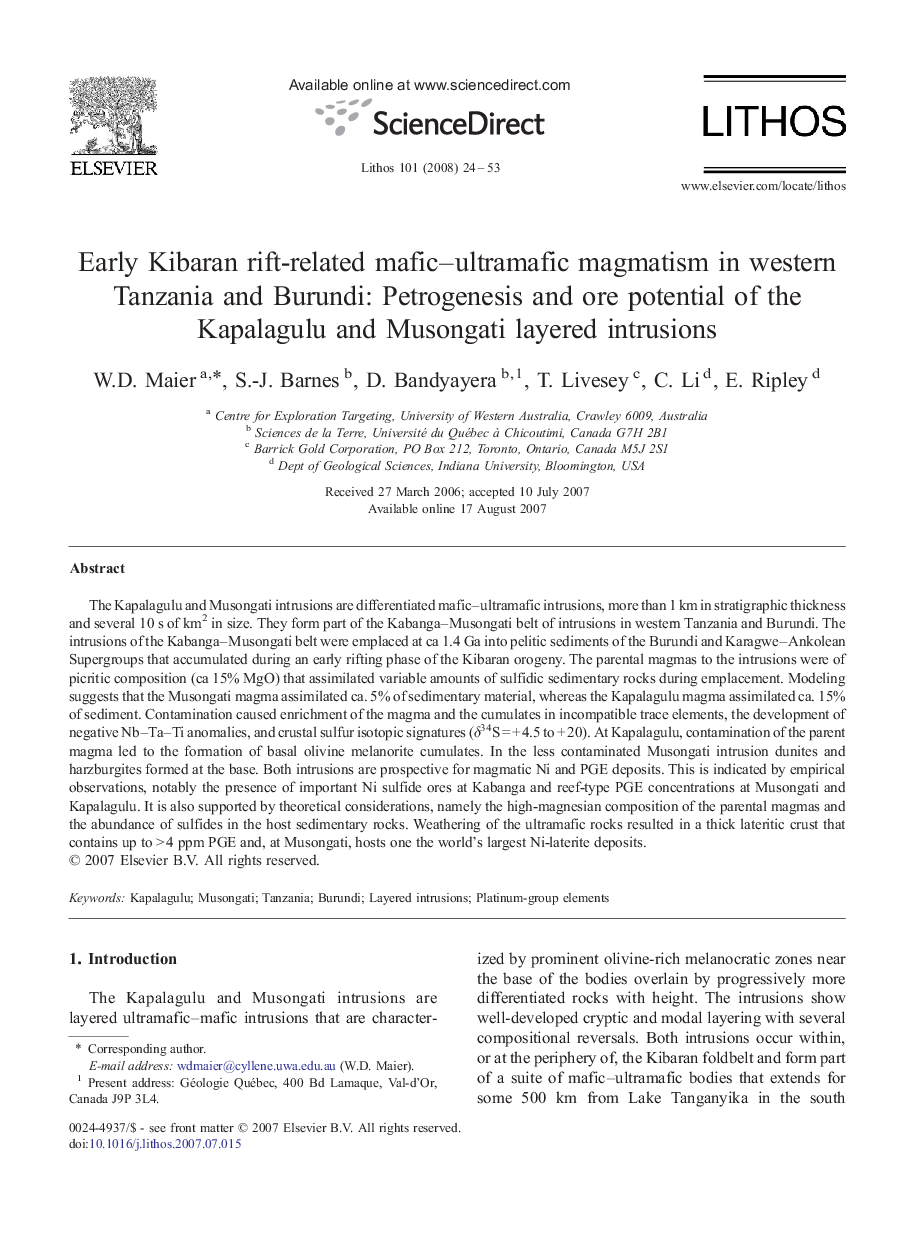| کد مقاله | کد نشریه | سال انتشار | مقاله انگلیسی | نسخه تمام متن |
|---|---|---|---|---|
| 4717588 | 1638760 | 2008 | 30 صفحه PDF | دانلود رایگان |

The Kapalagulu and Musongati intrusions are differentiated mafic–ultramafic intrusions, more than 1 km in stratigraphic thickness and several 10 s of km2 in size. They form part of the Kabanga–Musongati belt of intrusions in western Tanzania and Burundi. The intrusions of the Kabanga–Musongati belt were emplaced at ca 1.4 Ga into pelitic sediments of the Burundi and Karagwe–Ankolean Supergroups that accumulated during an early rifting phase of the Kibaran orogeny. The parental magmas to the intrusions were of picritic composition (ca 15% MgO) that assimilated variable amounts of sulfidic sedimentary rocks during emplacement. Modeling suggests that the Musongati magma assimilated ca. 5% of sedimentary material, whereas the Kapalagulu magma assimilated ca. 15% of sediment. Contamination caused enrichment of the magma and the cumulates in incompatible trace elements, the development of negative Nb–Ta–Ti anomalies, and crustal sulfur isotopic signatures (δ34S = + 4.5 to + 20). At Kapalagulu, contamination of the parent magma led to the formation of basal olivine melanorite cumulates. In the less contaminated Musongati intrusion dunites and harzburgites formed at the base. Both intrusions are prospective for magmatic Ni and PGE deposits. This is indicated by empirical observations, notably the presence of important Ni sulfide ores at Kabanga and reef-type PGE concentrations at Musongati and Kapalagulu. It is also supported by theoretical considerations, namely the high-magnesian composition of the parental magmas and the abundance of sulfides in the host sedimentary rocks. Weathering of the ultramafic rocks resulted in a thick lateritic crust that contains up to > 4 ppm PGE and, at Musongati, hosts one the world's largest Ni-laterite deposits.
Journal: Lithos - Volume 101, Issues 1–2, February 2008, Pages 24–53